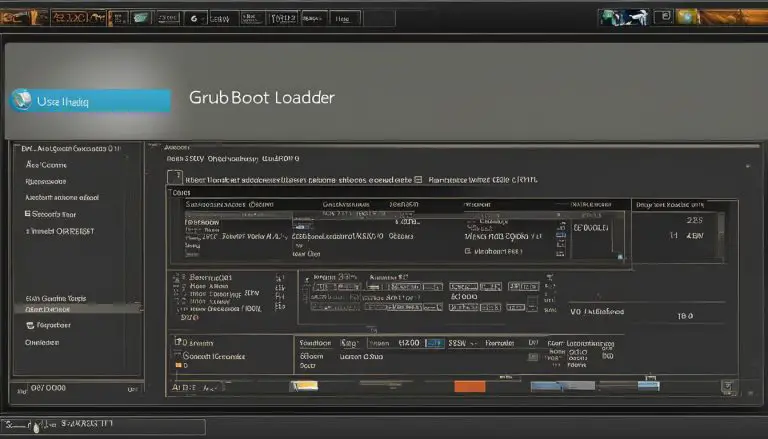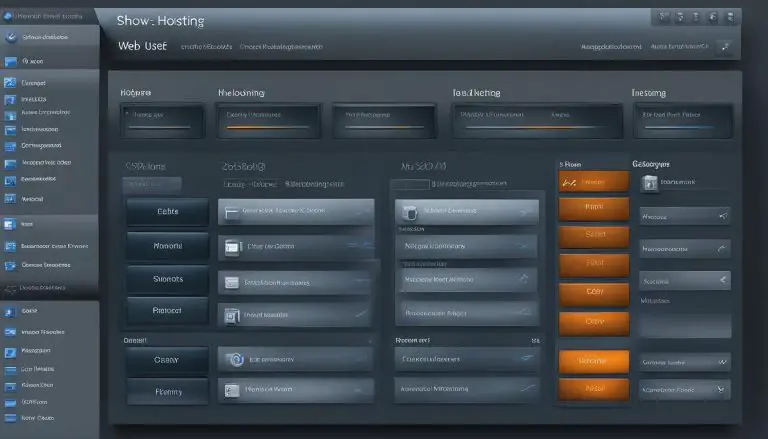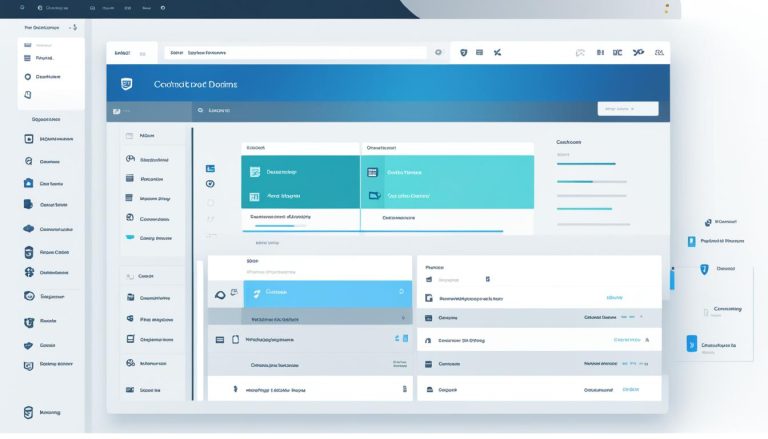Understanding What is Garbage Collection: A Basic Guide
In this section, I will introduce you to the concept of garbage collection and its importance in C# programming. Garbage collection is a vital mechanism that enables automatic memory management in C# programs. It relieves developers from the burden of manually allocating and deallocating memory for objects, ensuring efficient memory usage and preventing memory leaks.
Garbage collection plays a crucial role in maintaining the stability and performance of C# applications. By understanding the basics of garbage collection, you can optimize your code and enhance the overall memory management of your programs.
Key Takeaways:
- Garbage collection is a mechanism in C# that automatically manages memory allocation and deallocation for objects.
- It ensures that objects no longer reachable by the application are identified and reclaimed, freeing up memory.
- Garbage collection eliminates the need for manual memory management, simplifying code development.
- Understanding garbage collection allows you to optimize memory usage and enhance performance.
- Garbage collection prevents memory leaks and improves overall memory management in C# programs.
The Garbage Collection Process
The garbage collection process in C# is a crucial aspect of automatic memory management. It ensures efficient memory allocation and deallocation for objects in a C# program, preventing memory leaks and improving overall performance.
The process involves several steps, starting with the identification of reachable objects through a mechanism called marking. The garbage collector marks all objects that are still in use and reachable from the root of the object graph. Objects that are not marked are considered garbage and ready for removal.
Once the garbage objects are identified, the garbage collector reclaims the memory they occupy. It performs a sweep operation, freeing up memory and making it available for future allocations. Additionally, the garbage collector may also compact the heap to reduce fragmentation and improve memory usage.
| Step | Description |
|---|---|
| Marking | Identify reachable objects |
| Sweeping | Reclaim memory occupied by garbage objects |
| Compacting | Reduce fragmentation by compacting the heap |
Finalization is another important aspect of the garbage collection process. Before permanently deleting garbage objects, the garbage collector invokes their finalizers. Finalizers provide an opportunity for objects to perform any necessary cleanup operations before they are reclaimed.
Overall, the garbage collection process in C# involves marking, sweeping, compacting, and finalizing. It plays a critical role in managing memory efficiently and ensuring the smooth execution of C# programs.
Generations in Garbage Collection
The garbage collection process in C# is divided into three generations: Generation 0, Generation 1, and Generation 2. Each generation represents a different level of longevity for objects. Understanding these generations is crucial for optimizing memory management in C# programs.
Generation 0 is where short-lived objects reside. These objects are created and destroyed quickly, often within the scope of a single method or block. The garbage collector performs frequent garbage collections in Generation 0, quickly identifying and reclaiming memory for these short-lived objects.
Generation 1 contains objects that have survived a garbage collection in Generation 0. These objects have a slightly longer lifespan and may be accessed by multiple methods or blocks. Garbage collections in Generation 1 occur less frequently than in Generation 0.
Generation 2 consists of long-lived objects that have survived multiple garbage collections in Generation 0 and 1. These objects may be referenced by multiple parts of the application and have a significant impact on memory usage. Garbage collections in Generation 2 are less frequent than in Generation 0 and 1 but are more time-consuming due to the larger number and size of objects.
The following table summarizes the characteristics of each generation:
| Generation | Object Lifespan | Garbage Collection Frequency |
|---|---|---|
| Generation 0 | Short-lived | Frequent |
| Generation 1 | Medium-lived | Less frequent than Generation 0 |
| Generation 2 | Long-lived | Less frequent than Generation 0 and 1 |
Understanding the different generations in garbage collection helps developers optimize memory usage and ensure efficient memory management in their C# programs.
Garbage Collection Techniques
Garbage collection in C# provides two different techniques: server garbage collection and workstation garbage collection. Each technique is designed to cater to the specific needs of different types of applications.
Server Garbage Collection
Server garbage collection is utilized in server applications that have multiple processors and large amounts of memory. This technique employs multiple threads for garbage collection, making it highly scalable and efficient for handling the memory needs of large-scale applications.
By distributing the garbage collection workload across multiple threads, server garbage collection minimizes the impact on application performance and allows for concurrent garbage collection. This means that the garbage collector can run simultaneously with the application, reducing the chances of noticeable pauses or delays.
Workstation Garbage Collection
Workstation garbage collection, on the other hand, is employed in desktop applications that typically run on single processors. This technique uses a single thread for garbage collection, making it suitable for smaller applications with limited resources.
While workstation garbage collection may not offer the same level of scalability as server garbage collection, it still provides effective memory management for applications with fewer demands. The single-threaded approach ensures that the garbage collector does not compete for resources with the application, allowing for efficient memory allocation and deallocation.
| Garbage Collection Technique | Application Type | Benefits |
|---|---|---|
| Server Garbage Collection | Server applications with multiple processors and large memory requirements | High scalability, concurrent garbage collection, minimal impact on application performance |
| Workstation Garbage Collection | Desktop applications with single processors and limited resources | Efficient memory allocation, minimal resource competition with application |
Understanding the different garbage collection techniques available in C# allows developers to choose the most appropriate approach based on the specific requirements of their applications. Whether it’s a server application with high scalability needs or a desktop application with limited resources, C# provides the necessary tools for effective automatic memory management.
Benefits of Garbage Collection
The implementation of garbage collection in C# provides several significant benefits in memory management for programs. By automating memory allocation and deallocation processes, garbage collection eliminates the need for manual memory management, reducing the risk of memory leaks and improving overall memory usage efficiency.
One of the key advantages of garbage collection is that it frees developers from the responsibility of manually releasing memory. This not only simplifies the development process but also reduces the chances of memory leaks caused by human error. Garbage collection ensures that memory is reclaimed for objects that are no longer in use, freeing up resources for other objects to utilize.
Additionally, garbage collection plays a crucial role in preserving memory safety. It prevents objects from accessing memory allocated for other objects, reducing the risk of memory corruption and stability issues. Garbage collection helps maintain the integrity of memory allocation, ensuring that objects are properly managed and preventing conflicts between different parts of the program.
| Benefits of Garbage Collection |
|---|
| Frees developers from manual memory release |
| Reduces the risk of memory leaks |
| Improves overall memory usage efficiency |
| Ensures memory safety by preventing conflicts |
Furthermore, garbage collection helps optimize memory allocation on the managed heap. It intelligently handles the allocation and release of memory, ensuring efficient use of resources. By managing memory dynamically, garbage collection minimizes wasted memory and maximizes the availability of memory for active objects.
In conclusion, garbage collection in C# offers several advantages in memory management, including automated memory allocation and release, prevention of memory leaks, memory safety, and efficient memory usage. By utilizing garbage collection, developers can focus more on the logic and functionality of their programs, while the runtime environment handles the complexities of memory management behind the scenes.
Garbage Collection for Complex Object Graphs
Garbage collection plays a vital role in managing memory in C# programs, particularly for applications that have complex object graphs with multiple references. These complex object graphs can present unique memory management challenges, making it difficult to manually track and release memory for objects that are no longer needed.
By using garbage collection, developers can benefit from an automated process that identifies and cleans up objects that are no longer reachable, preventing memory leaks and improving overall memory usage. Garbage collection simplifies memory management for complex systems by automatically tracking object dependencies and reclaiming memory for unused objects. This helps ensure that memory is efficiently utilized, reducing the risk of memory exhaustion and improving the reliability of the code.
The efficient management of memory in complex object graphs is critical for maintaining optimal performance and preventing memory-related issues in C# programs. Garbage collection provides a valuable solution to address these challenges, allowing developers to focus on building robust applications without having to manually deal with memory deallocation.
Overall, garbage collection is an essential component of C# memory management, enabling developers to handle memory challenges in applications with complex object graphs. By utilizing garbage collection, developers can simplify memory management tasks, improve code reliability, and ensure efficient memory usage in their applications.
Use Cases for Garbage Collection
Garbage collection is a valuable feature in C# that offers numerous benefits, especially in scenarios where dynamic memory allocation and memory leak prevention are crucial. It provides automatic memory management, which is particularly useful in applications that frequently create and destroy objects during runtime.
One common use case for garbage collection is in web applications that handle user interactions, such as e-commerce platforms or social media websites. These applications often require dynamic memory allocation to handle user requests and manage large amounts of data. Garbage collection ensures that memory used by objects that are no longer needed is released, preventing memory leaks and allowing the application to efficiently utilize system resources.
Another use case for garbage collection is in game development. Games often require complex object graphs and frequent creation and destruction of game objects. Garbage collection helps prevent memory leaks and ensures efficient memory usage by automatically reclaiming memory for objects that are no longer in use.
Benefits of Garbage Collection in Use Cases:
- Efficient memory allocation and release
- Prevention of memory leaks
- Optimized memory usage in dynamic environments
- Enhanced application performance and reliability
Overall, garbage collection is a powerful tool that simplifies memory management in C# applications, especially in use cases involving dynamic memory allocation and the prevention of memory leaks. It allows developers to focus on building robust and efficient applications without the need to manually manage memory resources.
| Use Case | Benefits |
|---|---|
| Web applications | Efficient memory usage, memory leak prevention |
| Game development | Optimized memory management, prevention of memory leaks |
By leveraging the capabilities of garbage collection, developers can streamline memory management processes, reduce the risk of memory-related issues, and deliver high-performing applications for a wide range of use cases.
The Role of Finalizers in Garbage Collection
In the process of garbage collection, finalizers play a vital role in ensuring proper object cleanup. Finalizers are methods that are invoked by the garbage collector before an object is permanently deleted from memory. They provide an opportunity for objects to release any unmanaged resources they may have acquired during their lifetime.
Finalizers are implemented by defining a special method called Finalize within a class. The runtime guarantees that this method will be called at some point before the object is collected. However, it is important to note that the timing of finalizer execution is non-deterministic and may vary.
While finalizers provide a way to perform necessary cleanup operations, they come with performance implications. The execution of finalizers can introduce overhead, as the garbage collector needs to wait for them to complete before reclaiming the memory occupied by the object. Additionally, the non-deterministic nature of finalizers can result in delayed cleanup, potentially impacting the performance of the application.
“Finalizers should be used sparingly and as a last resort. Instead, it is generally recommended to use other cleanup mechanisms, such as implementing the IDisposable interface and using the ‘using’ statement.”
Disposing Objects with the IDisposable Interface
The IDisposable interface provides a more controlled mechanism for object cleanup. By implementing this interface, an object can expose a method named Dispose that allows developers to explicitly release any resources the object may have acquired.
Using the using statement, developers can ensure that the Dispose method is called when the object is no longer needed, even if an exception occurs. This helps avoid resource leaks and provides more deterministic cleanup compared to finalizers.
Memory Concepts in Garbage Collection
When it comes to garbage collection in C#, understanding the underlying memory concepts is crucial for efficient memory management. Let’s explore some key concepts that play a significant role in the garbage collection process.
The virtual address space is a fundamental concept in memory management. It represents the memory available to a process, allowing it to address and reference specific locations in memory. The virtual address space is divided into memory pages, which are typically 4KB in size, and can be mapped to physical memory or the page file.
The memory states within the virtual address space are also important to consider. The three main memory states are:
- Free memory is unallocated memory that is available for use.
- Reserved memory is memory that has been allocated for a specific purpose but has not been committed for use yet.
- Committed memory is memory that has been allocated and is actively being used by a process.
Understanding the virtual address space and memory states is essential for effective memory management in garbage collection.
In addition to virtual address space and memory states, we also have physical memory and the page file. Physical memory refers to the actual memory modules installed in the computer system. It is the physical hardware that holds the data and instructions being processed by the CPU.
On the other hand, the page file is a file used by the operating system as a supplement to physical memory. When the system experiences high memory pressure, it stores data that is not currently in use in the page file. This allows the system to free up physical memory for more critical tasks and avoid running out of memory.

By understanding these memory concepts, developers can gain valuable insights into how memory is managed in garbage collection. This knowledge enables them to optimize memory usage, improve performance, and ensure the efficient allocation and deallocation of memory resources.
Memory Allocation and Release in Garbage Collection
In the process of garbage collection, memory allocation and release play a crucial role in managing memory efficiently. When a C# program is initialized, the runtime environment reserves a contiguous region of address space known as the managed heap. This managed heap serves as the primary storage for objects created during the program’s execution. Objects are allocated on the managed heap dynamically as needed, with memory being reserved for each object based on its size and requirements.
The garbage collector’s optimizing engine closely monitors the memory usage and allocation patterns of the program. It determines the opportune moment to perform a garbage collection, carefully considering factors such as the available memory, the frequency of object allocations, and the impact on overall program performance. During a garbage collection cycle, the garbage collector identifies and releases the memory occupied by objects that are no longer in use, effectively freeing up resources and ensuring efficient memory usage.
The managed heap uses different memory allocation techniques to optimize performance and memory usage. It employs an allocation pointer to keep track of the next available memory location on the managed heap. Objects are allocated by moving this pointer forward and reserving memory for the object’s data and any additional metadata required by the runtime environment.
On the other hand, memory release occurs when objects are no longer needed or when the garbage collector determines that their memory can be reclaimed. The garbage collector performs a collection cycle to identify and release memory occupied by objects that have become unreachable, meaning there are no longer any references to these objects in the program. By releasing memory for unused objects, the garbage collector ensures that the managed heap remains efficient and effectively manages the memory resources of the program.
Managed Heap Memory Allocation and Release
The managed heap employs a generational memory management model, where objects are divided into different generations based on their longevity. The heap is further divided into three generations: 0, 1, and 2. Objects in generation 0 are short-lived objects that are created and destroyed quickly, while objects in generation 1 are longer-lived objects that have survived a collection in generation 0. Generation 2 contains long-lived objects that have survived collections in generation 0 and 1.
When memory is allocated on the managed heap, it is typically allocated in generation 0. The garbage collector initially focuses on collecting and releasing memory in generation 0, as this is where short-lived objects are stored. If an object survives multiple garbage collections in generation 0, it gets promoted to generation 1. Similarly, objects that survive multiple collections in generation 1 get promoted to generation 2. The garbage collector performs collection cycles on each generation, optimizing memory release and ensuring efficient memory management.
| Generation | Object Longevity |
|---|---|
| Generation 0 | Short-lived objects |
| Generation 1 | Longer-lived objects |
| Generation 2 | Longest-lived objects |
Through efficient memory allocation and release on the managed heap, the garbage collector ensures that memory resources are utilized optimally. By intelligently managing the memory requirements of the program, garbage collection plays a vital role in maintaining the performance and reliability of C# applications.
Conclusion
Garbage collection is a critical aspect of memory management in C# programs. It automates the allocation and release of memory, eliminating the need for manual management and reducing the risk of memory leaks. Through its process of identifying and reclaiming unused objects, garbage collection ensures efficient memory usage and improves overall program performance.
By utilizing garbage collection, developers can focus on other aspects of their code without worrying about memory management. The automatic nature of garbage collection simplifies code development and enhances code reliability, allowing for a more streamlined and efficient development process.
In conclusion, garbage collection is an essential feature that plays a pivotal role in memory management for C# programs. Its ability to automate memory allocation and release, prevent memory leaks, and optimize memory usage makes it a valuable tool for developers. By understanding the concepts and techniques of garbage collection, developers can leverage this feature to optimize their program’s memory usage and enhance overall performance.
FAQ
What is garbage collection in C#?
Garbage collection in C# is a mechanism provided by the .NET runtime environment that automatically manages memory allocation and deallocation for objects in a C# program.
How does the garbage collection process work in C#?
The garbage collection process in C# involves several steps, including marking reachable objects, identifying garbage objects, reclaiming memory, and invoking finalizers for cleanup operations.
What are the different generations in garbage collection?
Garbage collection in C# is divided into three generations: 0, 1, and 2, each representing a different level of longevity for objects.
What are the different garbage collection techniques in C#?
C# provides two types of garbage collection techniques: server garbage collection for server applications and workstation garbage collection for desktop applications.
What are the benefits of garbage collection in C#?
Garbage collection in C# frees developers from manual memory management, ensures efficient memory allocation, reclaims unused objects, and improves memory safety and code reliability.
When is garbage collection particularly useful?
Garbage collection is particularly useful in applications with complex object graphs and multiple references, as it helps prevent memory leaks and simplifies memory management.
What is the role of finalizers in garbage collection?
Finalizers in garbage collection allow objects to perform cleanup operations before they are reclaimed, although it is generally recommended to use other cleanup mechanisms for better performance.
What are the memory concepts relevant to garbage collection?
Garbage collection operates within the context of memory concepts such as virtual address space, memory states, physical memory, and the page file.
How does memory allocation and release work in garbage collection?
During garbage collection, memory is allocated and released on the managed heap. The optimizing engine of the garbage collector determines the best time for collection based on memory usage and allocations.
What is the conclusion of garbage collection in C#?
Garbage collection plays a critical role in memory management for C# programs, providing automated memory allocation and release, simplifying code development, and improving overall memory usage and performance.
- About the Author
- Latest Posts
Janina is a technical editor at Text-Center.com and loves to write about computer technology and latest trends in information technology. She also works for Biteno.com.






